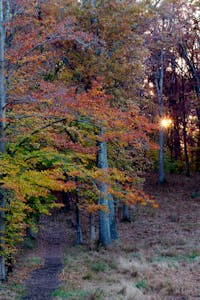Using the Concepts of Visual Design in Your Compositions

Visual Design aims to improve a design’s aesthetic appeal and usability. Some Visual Design elements used in photography are line, shape, color, value (the lightness or darkness of a color) and texture.
Line is one of the most effective ways to draw your viewer’s eye into an image. Line is also one of the easiest of the elements to find, because it is everywhere – in both manmade structures and objects as well as in nature. And line is one of the most important design elements in photography. They add great visual impact to your photographs.
Shape can be thought of as the outline of an object, which gives the object its two-dimensional appearance. Like Line, Shape is everywhere, and is usually the first thing the viewer sees in a scene. Almost every photograph contains one or more shapes, but great photographs are those where the photographer has used shape in a unique or interesting way.
Color is used to express mood and emotion, depending on the context of the image. For instance, warm colors (reds, yellows and oranges) can affect the viewer in a positive (happy and optimistic) or negative (angry and irritated) way. Cool colors create feelings of tranquility. Study color theory to learn how to use complimentary colors (ones that are opposite on the color wheel), analogous colors (ones that are next to each other on the color wheel) and monochromatic colors (ones that are varying shades of the same color). Subtle shades of color can affect mood and our perception of a scene.
Value of a color is used to set the relationship between lightness and darkness, usually through a light source to create shadows and highlights. The value of a color is important because the juxtaposition between light and dark values creates contrast. All colors have a value, and in addition to creating contrast, value can also add depth, create a pattern or add emphasis.
Texture, which is one of the essential visual design elements in photography, creates drama and is also one of the most useful tools a photographer has for making a two-dimensional image look three dimensional. Texture depends on light for its impact. Highlighting the texture of the subject in your image creates that three-dimensional look. To add more interest to your images, try to find something unique in each subject – with regard to texture – that will elevate it to the next level.
The next time you go out with your camera, think about these concepts and see which ones – if not all of them – can be used to create a great image.
Need help with “seeing” these elements in your images? WPS has a whole range of safaris that will help you with creating great images, such as Composition at the National Gallery of Art!
Or, visit the WPS website and find the safari that is right for you!
